Review: Sony Ericsson Vivaz
Sep 3, 2010, 5:55 PM by Eric M. Zeman
Sony Ericsson fields an 8.1 megapixel shooter with S60 5th Edition under the hood. Despite its potential, the Vivaz has problems.
Form
Is It Your Type?
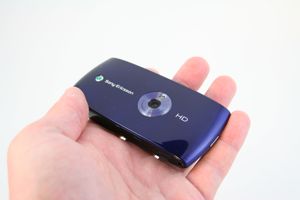
If you're the touch-happy, I-need-a-killer-camera-phone type, then Sony Erisson's 8.1 megapixel packing Vivaz could fit the bill. If you plan to use it as anything beyond a networked camera, however, the Vivaz is sure to disappoint.
Body
I really like the Vivaz's form factor. It is small, smooth, lightweight, and feels great in the hand. The entire back surface is a gently curved arc that makes it very comfortable. The width, thickness and length are all nearly perfect. It slips into a pocket with ease, and you'll almost forget it is there. On top of that, the fit, finish, and manufacture are all high quality.
There are just three buttons on the front of this touch phone, all crammed along the bottom edge. They are the send, home and end/back keys. The buttons are thin, and lined up in a mild smile. They protrude enough that they are easy to find, though both travel and feedback are a bit mushy.
Two ports are situated on the left side of the Vivaz. Tucked at the very tippy top is a 3.5mm headset jack. I wish the headset jack were on the top and not the side. Just below that is the microUSB port, which is covered by a rubber flap. The flap works fine and protects the port from dust.
Three buttons are placed on the right side of the Vivaz. The volume rocker is placed closest to the top. It is a string-thin strip that feels a little sharp to me, but it has good travel and feedback. Interestingly, Sony Ericsson has bestowed the Vivaz with separate keys to launch the video recorder and the camera. The video camera button is in the middle, and is slightly smaller than the camera button. It is a single stage key, and works well.
The dedicated camera key is larger, protrudes more, and has better travel and feedback. It is a two-stage key for taking photos, and each stage is distinct, which will help users focus shots before taking them.
I've always disliked that dedicated camera keys can launch both the camera and video camera, depending on how long you press the button. It's been a problem for me on more than one occasion when I wanted the camera and the video camera launched, and vice versa. Using two distinct keys solves that problem nicely.
The power/lock button is a slight dash notched in the top edge of the Vivaz. It is barely discernible from the surface of the phone, and has minimal travel and feedback. Given the importance of the lock key on touch phones, I would have preferred something a little larger.
In order to get at the microSD port, you need to remove the battery cover. Thankfully, the card is accessible without the need to remove the battery.
The Three S's
Screen
The Vivaz has a 3.2-inch display with 640 x 360 pixels. The smaller screen size and solid pixel density make the display look good when it comes to sharpness and clarity. Icons, text and graphics are clean and free of obvious pixels along curves and edges. My problem with the Vivaz's display is the brightness. It is far too dim. Even in indoor settings, it was sometimes difficult to read — with the brightness set all the way up. The unlock screen, in particular, is pretty much invisible. When taken outdoors, the Vivaz was practically impossible to use, unless working with the brightest of applications (i.e., the camera). It really is a shame, because the resolution is decent enough that you want to interact with the screen.
Signal
Signal performance with the Vivaz was very good for an AT&T device. It most places, it held onto the same number of bars or higher when compared to other AT&T phones. Most of the time, it was able to access AT&T's 3G network. I saw it dip down to EDGE just once, and that was in a place with known poor AT&T coverage. While testing the Vivaz, I did not drop any calls as a result of poor signal, nor did I miss any SMS messages. I had several calls go straight to voicemail, however. Wireless data speeds were amazingly inconsistent and slow more often than not. The browser would stall constantly, letting web pages hang half loaded.
Sound
Call quality was very good with the Vivaz. I had no problems at all during my tests. Calls were free of hiss, noise, or other interference, though several times the volume dipped a little bit. Mostly, however, call performance was good. The earpiece had plenty of power. I was able to easily make out conversations in noisy environments, such as a coffee shop. Ring tones and other alerts were also right on target. The Vivaz can be heard easily when set to a medium volume. At full blast, it is quite loud and almost borders on abusive. The speakerphone was among the clearest I've ever heard. Truly fantastic sound, and the volume was also solid. The speakerphone works very, very well.
Battery
The Vivaz consistently lasted about two days on a charge. Given all the radios, network-pinging apps, and the screen, I'd rate that as fairly good performance. The one thing I noticed that is that the battery drains much faster when the Vivaz is being used to record HD video. You could deplete a full charge in several hours when recording video. If you're going away for the weekend and plan to use the camera/video camera heavily, I'd bring the charger and top up at night.
Touch
The Vivaz has a resistive touch screen. It comes with a stylus. That's a bad sign right there. Any touch phone that ships with a stylus is doomed to failure in my book. Practically speaking, the Vivaz has one of the worst, least-responsive touch displays I've ever used. Not only did I often have to press things once or twice, but thrice and even four times to get the phone to react properly.
Beyond the bad finger poking behavior, swiping behavior is far worse. Swiping never seemed to work as intended, and the Vivaz would switch screens when you meant to scroll through a list or vice versa.
Also, text entry is terrible. The Vivaz flips between at least two entirely different messaging composition screens seemingly at whim, making for an ugly and inconsistent experience. To top it off, the T9 doesn't work all that well, and the software QWERTY keyboard for pecking out messages is laughably small.
The Vivaz was utterly maddening to use because of the touch display, but the user interface made it far worse.
Basics
Menus
Here's where a solid piece of hardware meets its demise. The Vivaz has perhaps one of the most awful, confusing, and unusable user interfaces I have ever encountered on a mobile device.
The Vivaz is based on Symbian^1 - better known as S60 5th Edition - and has been given a custom skin by Sony Ericsson. Given my experience with S60 devices, I thought mastering this new phone would be a piece of cake. The Vivaz is more like a 30-layer cake with different flavored icing in between each layer, with 6,000 candles on top.
First, the home screen: At first boot, the Vivaz has a mostly-blank home screen. At the top are five icons arranged in a dock. At the bottom is a black box that has shortcuts to the phone, media, messages and search tools. This box appears randomly on the central home screen. Some times it is there, and some times it is not. There is no explanation for its behavior.
The central box at the top of the screen indicates the home screen. To its left is a Twitter icon and a Contacts icon. You can swipe to reach them, or tap the icon at the top of the page. To the right of the main home screen is a media player that automatically displays the last picture you took and starts a slide show (this could be dangerous!) The last icon is a page reserved for shortcuts. The shortcuts can be customized by the end user, though several shortcuts are pre-loaded. The problem is, it takes two swipes to get over to the shortcuts. It is sometimes faster to use the main menu instead, negating the usefulness of having shortcuts.
Let's circle back to the buttons on the front of the Vivaz. The central button on the bottom of the Vivaz opens the main menu. Many other touch phones use the central button to return users to the home screen. On the Vivaz, it opens the main menu, no matter what other app or service you might be using. Pressing and holding the main key opens the same multitask tool found on Nokia S60 devices.
The main menu is a plain grid of applications and folders similar to what you'd find on any S60 device. There is an options function accessible from the bottom left corner, and an Exit button from the bottom right.
What really bugs me is this: just as on Nokia's touch-based devices, some icons need to be tapped twice — once to select, once to open — and others only need to be tapped once. An application, for example, can be tapped once to start it. Folders or settings need to be tapped twice. This is infuriating and makes no sense whatsoever. Additionally, once you dig down beyond the top-level menus, things revert to the ugly S60 text-driven menus. These are not finger-friendly at all. Mixing inconsistent tap once or tap twice behavior with poor menus and terrible screen performance makes for an infuriating experience.
The good news is that you can change this UI skin - which Sony Ericsson refers to as a theme - to one of several other skins. Unfortunately, none of them are better, and they actually duplicate functions. For example, all of the other UI skins have three buttons to reach the main menu from the home screen. That's just silly. Most of them are clearly cut-and-pasted from Nokia's S60 home screen behavior, complete with the tabs across the top when drilling down deep into the menus.
Nothing about the Vivaz menu system is seamless, nothing about it makes sense, and I imagine most users will dislike it intensely.
Also, don't be surprised if the Vivaz yells at you for leaving too many applications running in the background. It "runs out of memory" far too often for a modern device, forcing users to quit their current task and go out and close some of the other apps before proceeding.
Calls/Contacts
Calls
Want to make a call with the Vivaz? Good luck.
With a dedicated send key, you'd expect it to be easy. Nope. Pressing the send key only opens the call log. From there, you can press individual call logs to dial the number. There's no way to launch the actual dialpad from the call log, however. If you want to dial a number, you have to exit the call log, then find and press the phone icon on the screen. Only then does the dialer pop up. Using the dial pad is a chore, mostly because the display is so buggy and slow. On top of that, the software send key is too small, and located too close to the options menu button. Half the time you intend to place a call, you accidentally open the options menu instead. This gets old quick. Of course, many people choose to make calls directly from the call log.
Once you are able to successfully dial and connect a call, the Vivaz completely fails at usability. Nearly every touch phone I can think of offers nice, finger-friendly buttons on the screen to press for in-call options. Not the Vivaz. It forces users to peck at the options button, and then interact with a painfully small text-based list of items.
The same is true for the call log. Sure, it is easier to re-dial numbers there, as well as send text messages or emails, but they are all difficult options to interact with.
Contacts
The contact application is very similar to the contact app on S60 phones. The default activity when it is opened is to search through your contacts. Because text entry on the Vivaz is so comically bad, I say skip searching and just scroll through your contact list. It's much faster, trust me.
Each contact card can hold four numbers, an IM handle, several email addresses, a postal address, and notes. Users can add more detail fields if they wish. There's no integration with Facebook or other social networks like there is on competing smartphones. It offers just the basics, and lacks any sort of visual appeal.
Messaging
The Vivaz offers most of the typical messaging features, including text messaging, picture messaging, email, and instant messaging. Seasoned S60 users will be all-too-familiar with the tools needed to interact with the Vivaz's messaging apps.
Let's start with text messaging. For starters, there are two text messaging applications. Yes, really. The first is the nearly useless S60 messaging application. It offers the barest of basics. No threaded messaging here, but you can choose to sort messages into lists by sender. The second text messaging application is called Conversations, and was birthed from Nokia's Beta Labs. Conversations offers threaded messaging, albeit an ugly variant thereof. What's worse, is Conversations has two different text input methods. There's an on-screen tool that brings up the software dial-pad for typing in T9. However, if you press the Reply button, it opens an entirely different text entry screen - the one you're used to from S60 devices.
Here's the killer, though: when you rotate the phone onto its side to use the software QWERTY, it doesn't adjust automatically. The screen rotates, but keeps the T9 keypad active. You have to manually select the QWERTY keyboard, which takes two steps. This is ridiculous. They QWERTY should appear automatically. Every text input method is atrocious to use. T9 is always the default, and it offers different buttons and characters depending on what application you're using. Some consistency would be nice here.
The Vivaz has two email clients. The first is the typical, kludgy S60 email application. It works fine for POP3/IMAP4 accounts, but again it suffers from text-entry issues. The Vivaz also comes with DataViz's RoadSync email client. This is an enterprise-grade piece of software that uses Microsoft Exchange ActiveSync protocols to grab email. This application is robust and works well, but it's complete overkill for a device of this grade. I suppose it's nice to have the option, though.
The IM client works with AIM, Yahoo and Windows Messenger. It's not the best IM client, nor the worst. I'd love to see support for Google Talk, but no dice on that one.
Social Networking
There are several avenues to approach social networking with the Vivaz. First, it has dedicated Twitter and Facebook applications pre-loaded. AT&T has also stuffed its SocialNet app on the Vivaz.
Twitter users will be happy enough with the on-board Twitter application. It helps manage Twitter conversations in a usable way, though I found it to be a bit sluggish. The same goes for the Facebook application. It offers the most important features - access to Wall, Emails, and Friends - but does so with little pizazz.
AT&T's SocialNet app, which has been appearing on its feature phones of late, bundles Facebook and Twitter status updates into one location. The app can be used to update your own status to one or both networks, but offers little in the way of interactivity.
Extras
Music
Here's where things start to look a little brighter. Sony Ericsson has given the Vivaz a dash of its familiar PlayStation-themed music user interface. It lets users easily sort through albums, artists, and songs. Most of my album art showed up once the Vivaz had time to digest the contents of the microSD card.
The player itself is decent, and displays the album, artist, and track information at the top, the album art in the middle, and the controls down below. There are some buttons that allow users to share their current song selection, make the song the ringtone, as well as add it to a playlist. Another button minimizes the music player and puts it in that black box that sits at the bottom of the home screen. The music player on the home screen lets you multitask and still have quick access to the player controls.
Music sounds OK through the speaker, but quite good with regular earphones. I am surprised by the lack of controls over the sound, such as pre-loaded equalizer settings. Music sounded decent enough without it, but still, it would be nice to have options.
It has an FM radio that works when stereo headphones are plugged in. The FM radio app was a disaster, though. Extremely buggy, slow and difficult to use.
Camera
Camera
The first interesting thing about the camera is that pressing the camera button when the phone is locked will automatically unlock it and launch the camera application. That saves a step when you're in a hurry to catch a shot. It never went off accidentally during my tests. It's still not all that fast to launch, though.
The Vivaz's camera offers plenty of options for controlling its behavior. The display has six different software buttons that let users fine-tune the camera. White balance can be adjusted, as can brightness, focusing mode (auto, portrait, macro, infinity), shooting mode (normal, panoramic, smile detection, etc.), scenes, and of course items such as resolution. It also offers an image stabilizer, effects, different shutter sounds, and a timer.
The Vivaz focus quickly and takes pictures quickly. The good-quality shutter button helps a lot to control the focus and shutter. After the image is taken, the Vivaz offers it up for review. A quick press to the camera key returns you to image-taking mode. There is also a software button that does the same thing.
It still feels like you're taking pictures with a phone and not a real camera, but the Vivaz's camera features are the most straight-forward and least-confusing parts of the phone.
Gallery
The gallery displays images in a simple grid. Pressing any of the images opens it up to fill the screen. You can swipe from side-to-side to pan through your image library. Press the image quickly, and some tools appear to let you take some actions. These include sending the image via email/MMS/Bluetooth, deleting it, or editing it.
The editing features are neat. The tools allow you to make adjustments to the exposure level, white balance, color saturation and sharpness. It also can be used to crop and rotate images, as well as add text boxes, clip art, text bubbles, and so on.
The gallery can also be used to set images as wallpapers and assign them to contacts. The one problem with both the camera and the gallery is, again, the responsiveness of the display. Making all these adjustments and editing images can be painful due to the inconsistent behavior of the touch display. Having to press things twice is not fun when you're scrambling to get a shot.
Photos/Video
Photos
The Vivaz has an 8.1 megapixel camera and an LED flash. Given Sony Ericsson's heritage of solid camera phones, I was expecting to be impressed. I was impressed, mostly. Image quality ranged a bit too much between fantastic and merely OK. Photos captured outdoors were often spectacular, with rich, warm colors, sharp focus and no grain. Every now and then, sunlight would blow out certain colors, such as reds, but for the most part that wasn't a problem.
Images that I took indoors were much more inconsistent. The biggest problem is the presence of grain. The Vivaz still does a solid job of getting exposure and white balance correct, but indoor images had a grainy haze to them and weren't as colorful or vibrant as those taken outside.
Despite the grain and haze, the Vivaz drastically outperforms other camera phones both indoors and out. The camera truly is the Vivaz's best feature. Vacation photos taken with the Vivaz will look great on Facebook, Flickr, Picasa, and probably even hanging on your wall.
Video
The Vivaz can capture video in 720p HD resolution. It can be dialed down to VGA, QVGA or CIF for picture messages. It has many of the same controls as the camera, and users can adjust for lighting and scenes.
The quality of video captured with the Vivaz ranks right up there with the best I've seen from other top-of-the-line devices. The Vivaz's sensor does a great job of balancing out light, adjusting to changes in brightness, and movement. The image stabilizer helps to keep everything from looking to shaky, and there is very little grain and blockiness noticeable. I don't know if the Vivaz can stand in for a dedicated HD video camera, but it will certainly suffice for casual video needs.
The Vivaz definitely takes YouTube-quality video, and playback looks pretty decent on an HD TV.
Browse/Customize
Browser
The Vivaz comes with what appears to be the S60 browser. It has a decent toolset, and lots of options, but is very slow. Data speeds are never zippy with the Vivaz, and most often were downright turtle-like. Panning around web pages is painful due to the poor touch functionality, and doing complex gestures such as pinch-to-zoom are out of the question with the resistive touch screen.
Double-tapping on the screen zooms in so you can read text, but there's no way to zoom back out by pressing on the display. You have to open the magnifying glass and dial down the zoom level. This takes forever.
The browser would often freeze for no apparent reason. You'd press and press and press, and nothing would happen. Then it would suddenly come back to life, register all the presses, and launch three different web pages with no way to stop it.
It does a good job at rendering full web pages, though, and PhoneScoop.com looked good in the Vivaz's screen.
Customize
The Vivaz offers a number of customization options. The are a handful of themes on board, different colors for the backgrounds, a nice set of wallpapers and ringtones. The main menu can be reorganized if users wish, and there are customizable shortcuts.
Extras
Apps
The Vivaz has access to AT&T's application center, which is really just for purchasing wallpapers, ringtones, and content such as that. There are other apps available, but they are not the robust applications that are offered to today's smartphones. This is in part because the Vivaz runs an odd branch of Symbian, and it isn't widely supported by U.S. developers. It comes preloaded with several trial games and applications.
Bluetooth
The Vivaz paired with both mono and stereo Bluetooth headsets with ease. Phone calls were decent through a standard headset, though the volume was inconsistent. Music sounded great when played through a stereo Bluetooth speaker accessory. I was able to send photos and other files back and forth between the Vivaz and my computers with minimal fuss. The Bluetooth works fine.
Clock
The Vivaz is not a suitable watch replacement. There's no way to see the time unless it is fully unlocked, as there isn't a clock on the unlock screen at all. Once unlocked, there is a small clock in the black box on the home screen. The problem is, the Vivaz returns to the screen you last used when it is unlocked. For example, if you were browsing the web, the Vivaz goes back to the web page, not letting you see the time on the home screen at all.
GPS
The Vivaz comes with a whole host of GPS-based applications and services. First, it has access to AT&T's for-pay navigation service. It also has AT&T Maps, AT&T Family Locator, Loopt, Where, and several other GPS sports applications. The AT&T Navigation service works fine, but the $10 monthly fee is enough to prevent me from using it. The Family Locator applications lets parents pinpoint their kids' phones on a map.
Wrap-up
I hate to say it, but the Sony Ericsson Vivaz is one of the worst phones I've used. I could forgive the crappy touch response if the user interface were decent. It's not. The UI skins that Sony Ericsson has cooked up to cover S60 5th Edition are simply awful in almost every respect. The menus aren't finger-friendly, the inconsistencies between single taps and double taps leads to lots of frustration, and the overall slowness and bugginess make the Vivaz a chore to use. There is nothing easy about it.
It definitely has the worst text-entry tools I've ever seen on a handset. The terrible mash-up of T9, QWERTY, and inconsistent text-entry fields make typing nearly impossible, let alone practical. This is not a phone for messaging, for email, for social networking or for anything else that requires users to type.
Battery life and phone calls were good, and the speakerphone was excellent. The music player is decent. The camera performs well, has a good user interface and takes good pictures. The video camera performs similarly well. The gallery application and editing tools give the Vivaz at least one solid feature worth recommending.
But no phone is worth just one feature.
Unless you are seriously aching for a Sony Ericsson camera phone, there's no other redeeming reason to buy this phone.

Comments
Symbian needs to get their act together.
Good to know--


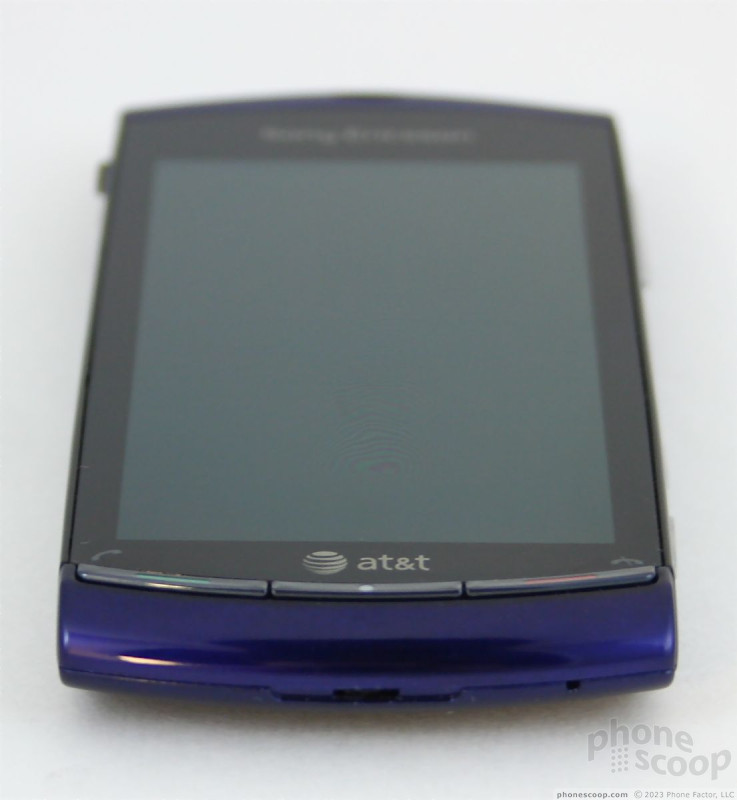









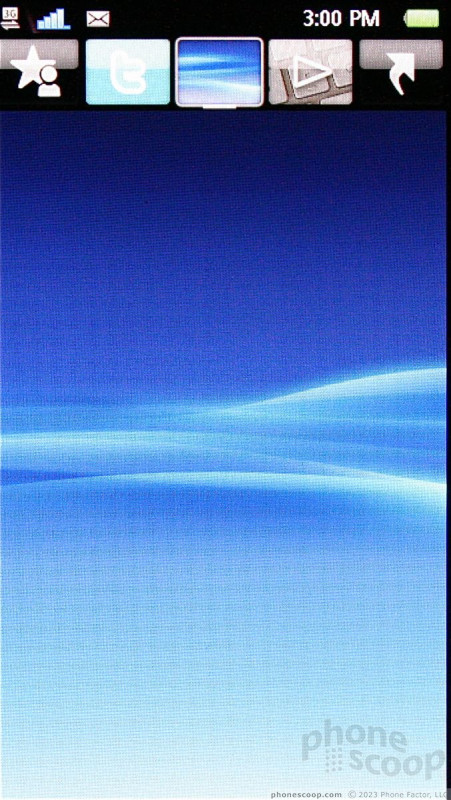






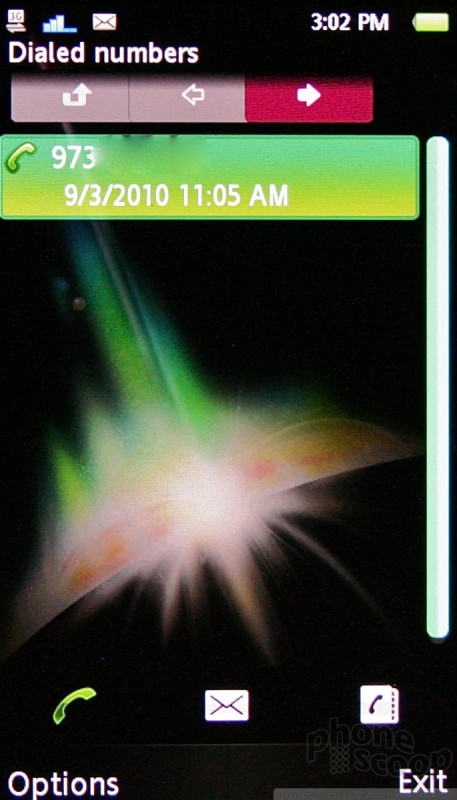




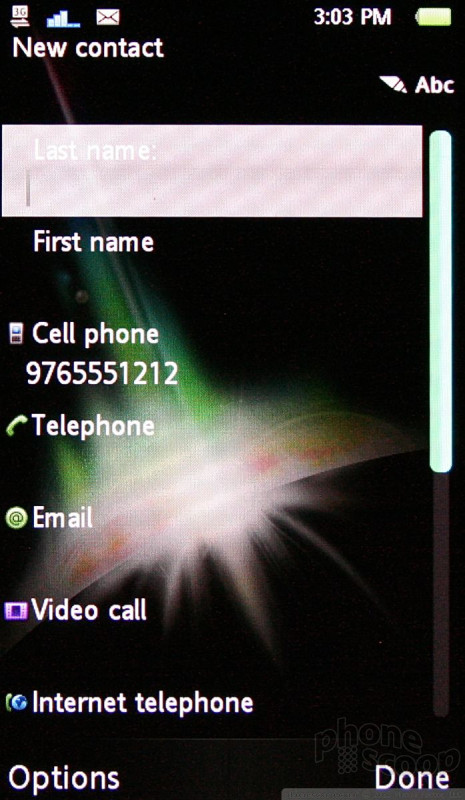



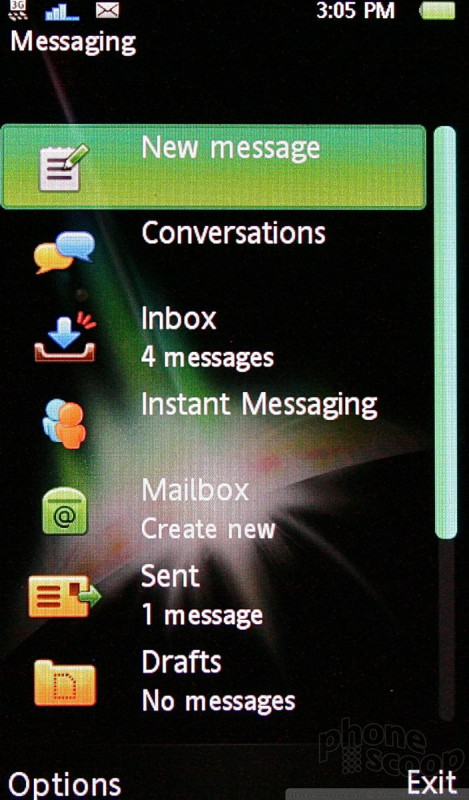








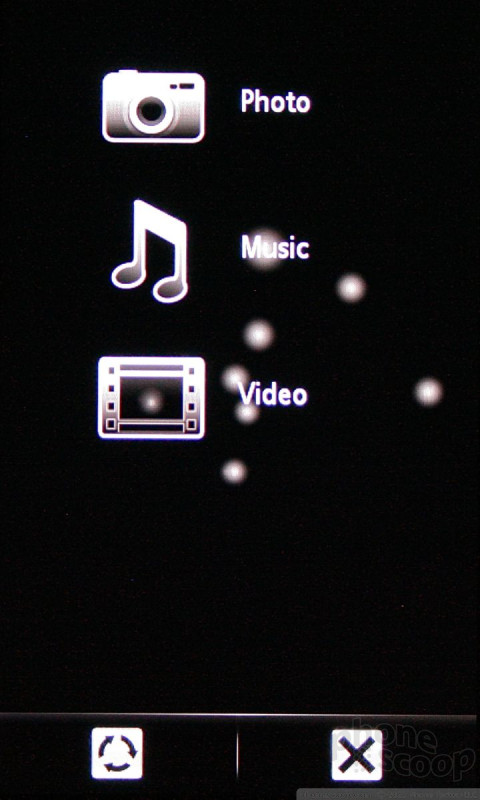







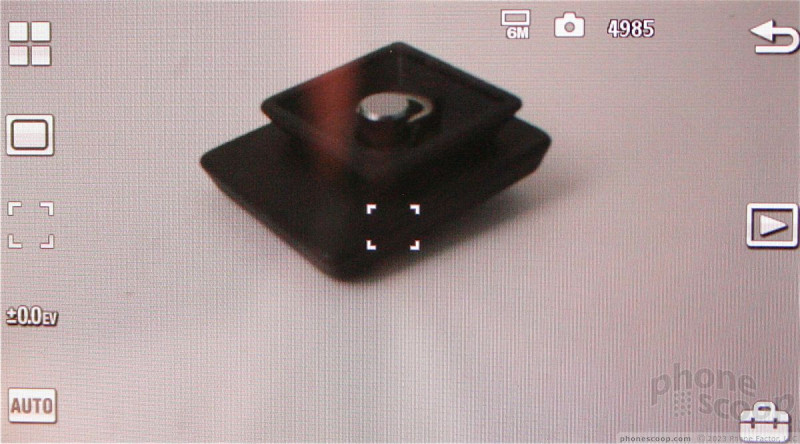




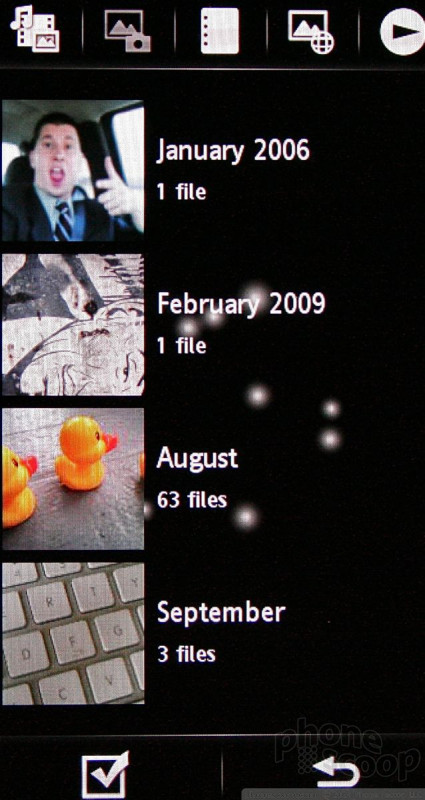





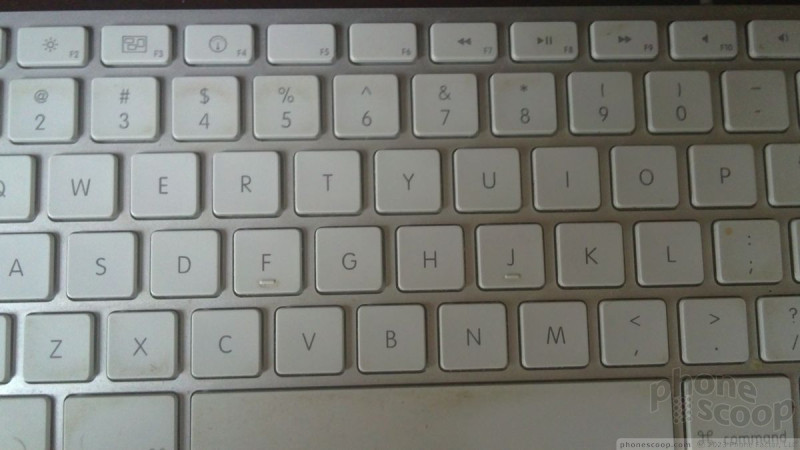


















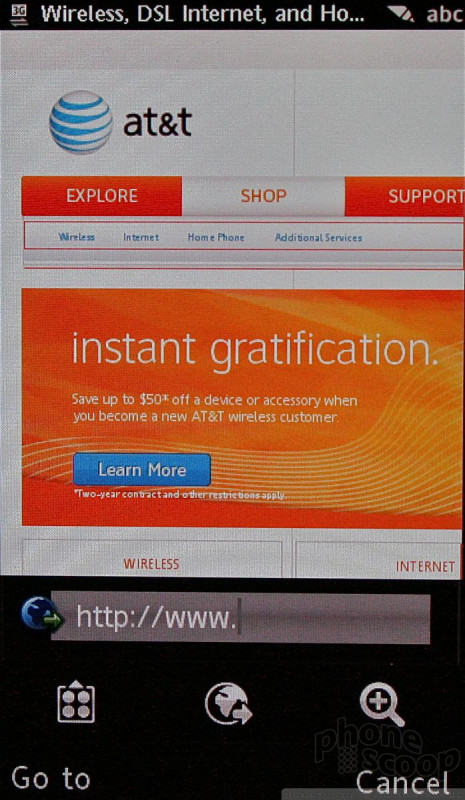



 Asus ROG Phone 7 is a Gaming Powerhouse
Asus ROG Phone 7 is a Gaming Powerhouse
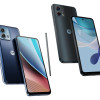 Motorola Updates its Most Affordable Phones
Motorola Updates its Most Affordable Phones
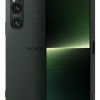 Sony Updates Flagship Phone With New Camera
Sony Updates Flagship Phone With New Camera
 Samsung Brings its Military Phones to First Responders
Samsung Brings its Military Phones to First Responders
 Google Pixel 8 Series Saves the Best for the Pro
Google Pixel 8 Series Saves the Best for the Pro
 Sony Ericsson Vivaz
Sony Ericsson Vivaz







